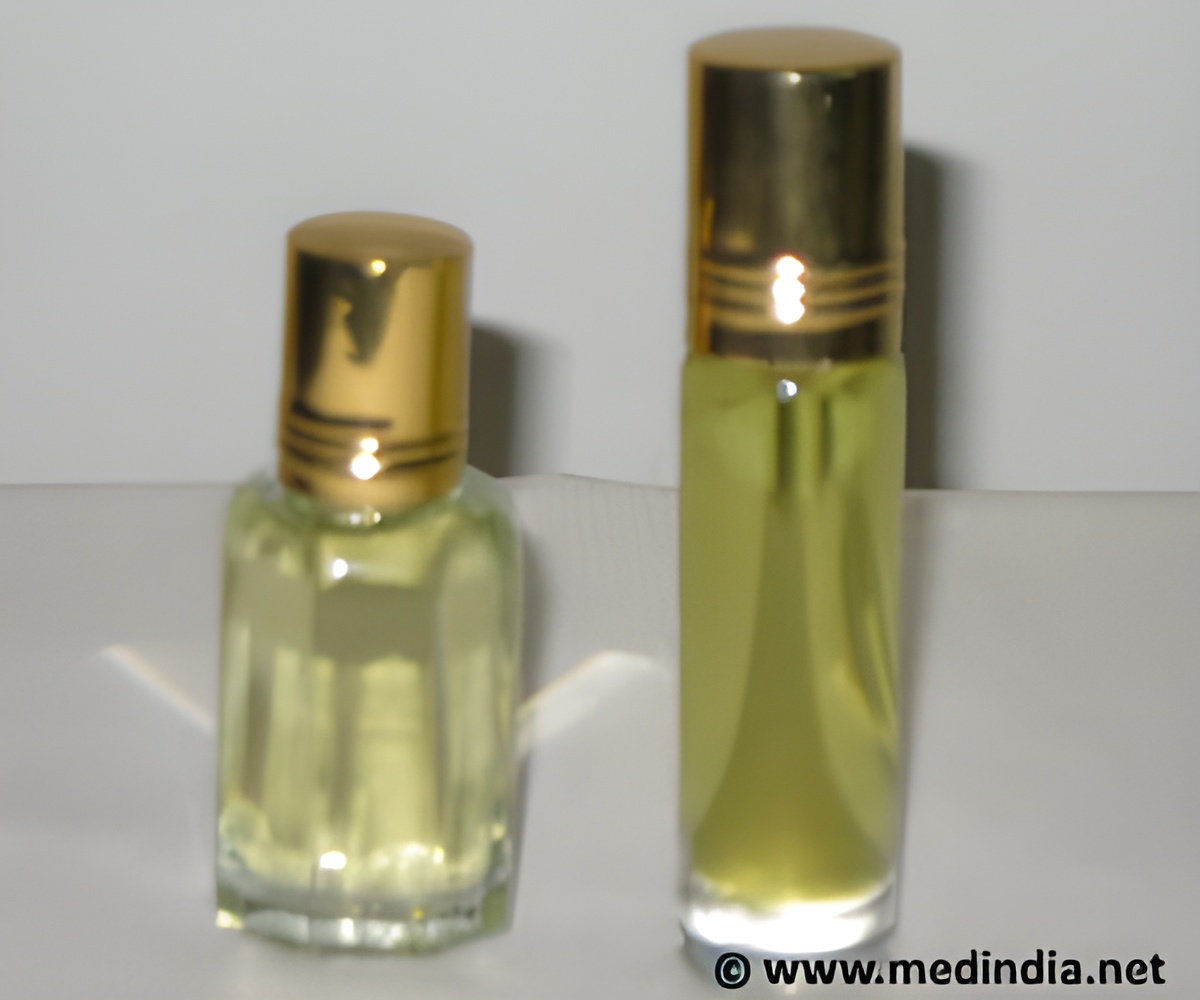A fragrance expert reveals the secrets of what goes into the making of fragrances, perfumes and essential oils, an obsession that has gripped centuries.

A. Perfumes are a blend of natural oils and aromatic chemicals. Essential oils are natural oils, concentrates, which are derived from nature such as flowers, wood. Of late essential oils are also available in synthetic form. The fragrance one gets from perfumes is because of the natural oils mixed in the concoction. The use of essential oils is versatile where they are used in scented candles, aromatherapy, incense sticks, room fresheners, and other housecleaning agents.
Q. Do fragrances really have the enigmatic effect people have been claiming through centuries?
A. Perfumes are known to make many feel good which explains markets flooding with perfumes, essential oils and scented items. Lavender used in room fresheners is capable of soothing the mind of a traumatised or stressed or mentally tensed or restless person.
Q. Then, why do some people get headaches?
A. Some people are known to be allergic to certain smells, ironically even the ones used in pain balms, the purpose of which is to alleviate pain and give relief. Some fragrances are known to cause nausea and some people get headaches at the smell of any fragrance. Fragrances in hospitals may irritate or cause allergy or have an adverse effect on a patient. Jasmine, a common smell gives headache to many. Also, a fragrance has many factors impacting its influence such as its storage conditions, climate, the surface it is used on, the body’s reaction to the chemicals to mention a few. Reason is hard to say because it is just like how one falls ill when they travel in a bus.
A. Essential oils are natural, very few of them are synthetic. At the most people buy essential oils for items produced in a cottage industry. It is mostly used in aromatherapy. In a facial, there’s a combination of chemicals that may emit an unpleasant odour and adding essential oil offers pleasurable feeling. Only sandalwood oil is available in its purest form, which emits the sandal odour, but even that tends to give mild castor tinged smell unlike the synthetic ones. The absolutes of rose, jasmine and lavender are too harsh; one does not even get the fragrance of the original flower. They have to be combined with other materials such as oils and chemicals before they can be used.
A. Roses, jasmine and sandalwood are traditional Indian fragrances. India tops the chart when it comes to jasmine and sandalwood because jasmine does not grow in many climates. Tourists in India are found wrapping their wrists or necks with jasmine garland. Agar or Oudh is a popular fragrance from the Middle East, slightly strong. Oudh comes in two forms, wood rolls and in diluted form. Attar is basically natural oil, raw perfume non-diluted in alcohol. When Muslims go into the mosque they wear a non-alcoholic fragrance.
Q. Many people have taken it as a hobby to create fragrances at home. Can one make perfume at home?
A. There are over 100 essential oils used for various purposes. However making perfume at home is highly improbable because it is tedious and one would need a license to procure certain ingredients such as ethanol used in perfume making. It takes many ingredients to make a perfume including many essential oils in appropriate combination.
Q. How are fragrances segregated between men and women and between domestic and cosmetic purpose?
A. For cleaning, people prefer lemon grass oil and citronella java oil, whereas for room fresheners people have preferences, so no one fragrance can be mentioned in isolation. Some prefer subtle fragrances while others may prefer stronger ones. It's something like the music one hears in fancy places. You realise there is music in the air, but can’t say for sure what is being played. Even the perfumes people wear, they are becoming unisex. Kids may have a liking to fruity fragrances.
Q. What of the colours in fragrances?
A. Ancestors have assigned colours to certain fragrances, which is registered in our minds. By nature, essential oils and even most perfumes one finds in the market are colourless. So colours are added to assist people to identify perfumes with these colours. For example shades of pink is associated with a rose fragrance, mild yellowish shade with jasmine, woody brown for a sandal. Certain cleaning products are marketed in blue, so if the company changes the colour then it might not have the same appeal to the buyers.
Fragrances are omnipresent despite preferences. Time tested obsession to gratify the olfactive faculty has led to the creation of perfumes, essential oils, incense sticks and even the discovery of the fumes of gum benzoin. In fact each human is given his or her measure of pheromones. Need we elaborate on why fragrances continue to enamour us! Medindia thanks V. Srinivasan for sharing his expert insight into the world of fragrance.
Source-Medindia











